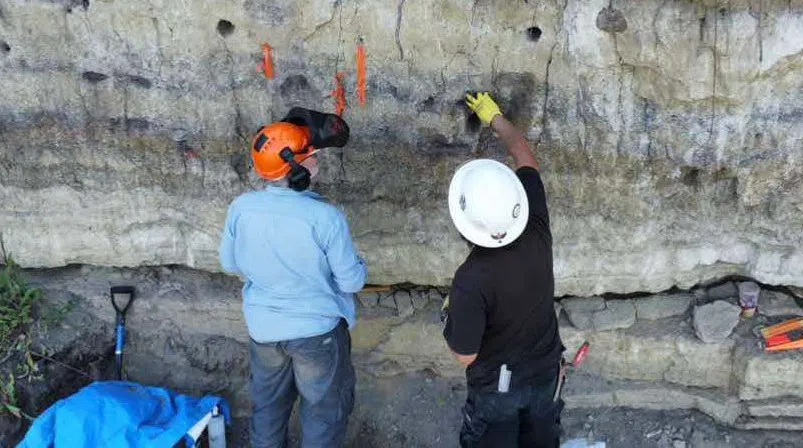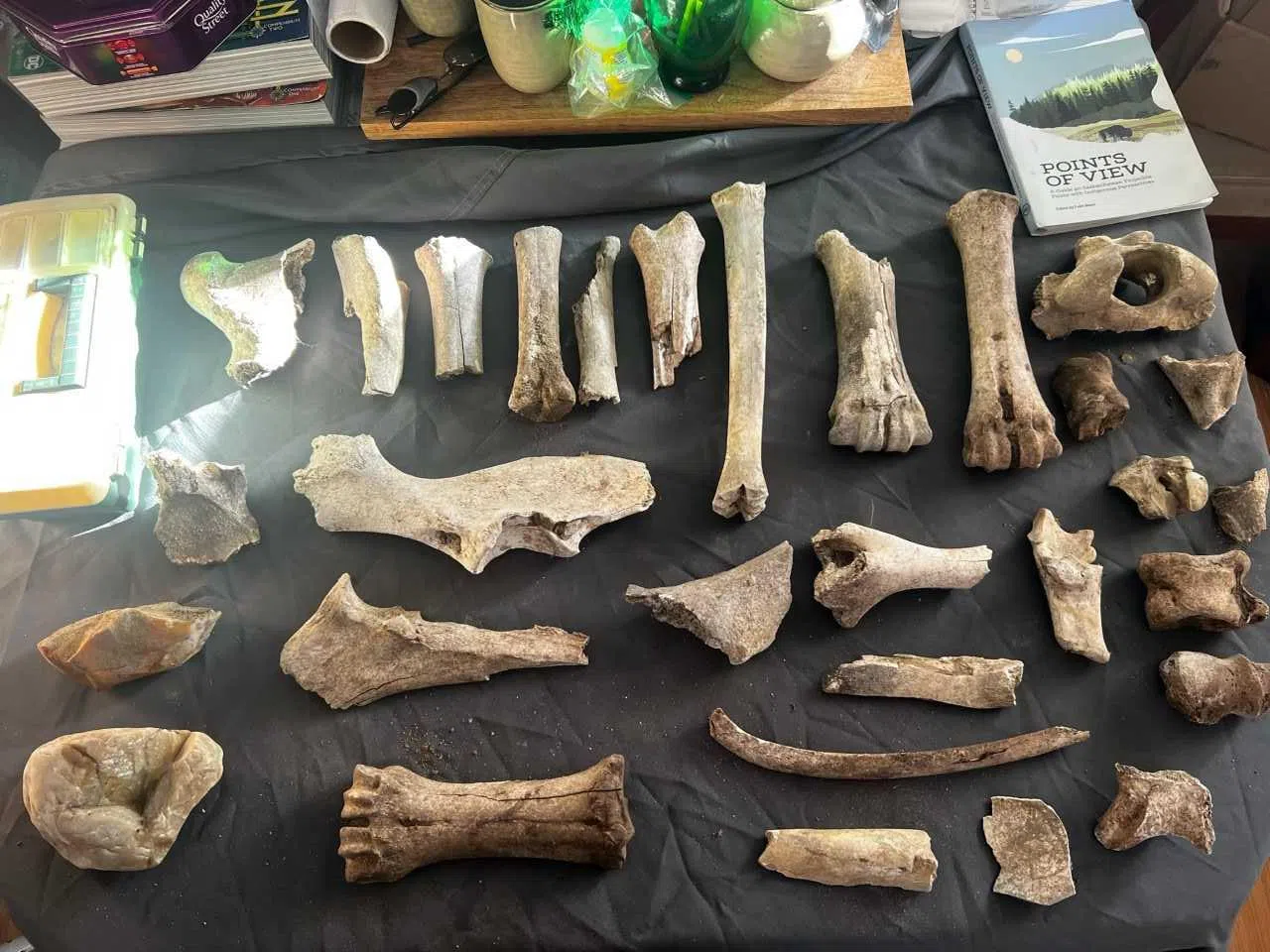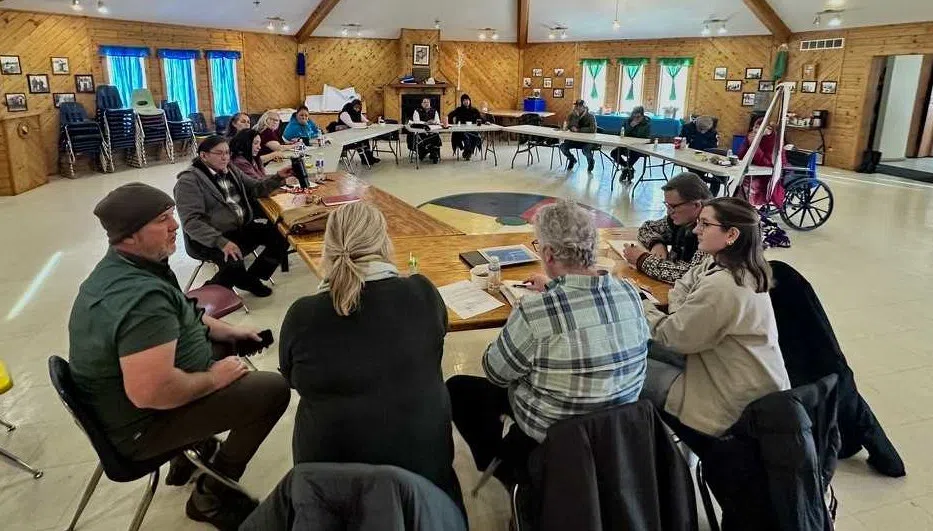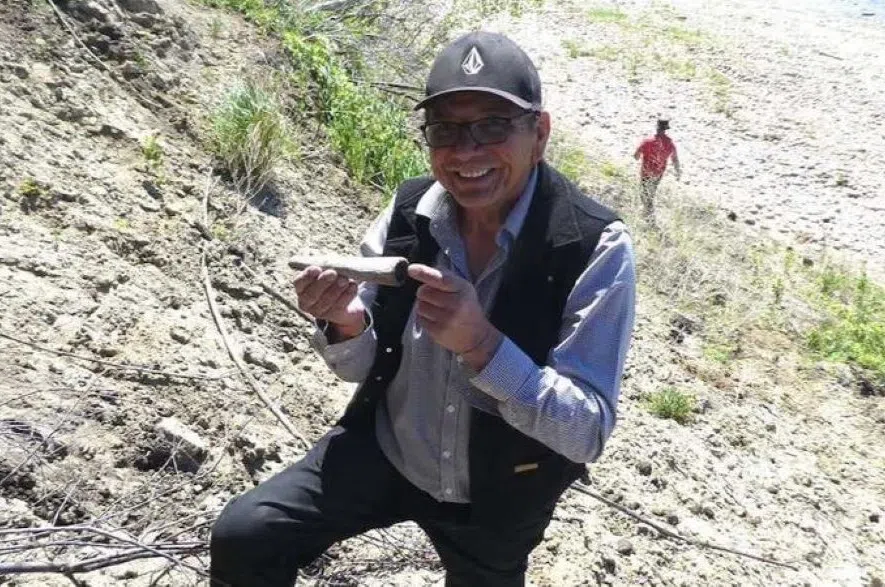The revelation—one of the oldest known Indigenous sites on the continent—confirms that highly organized societies existed in the region far earlier than previously believed.
This places it among some of the world’s most well-recognized ancient sites, such as the Great Pyramids of Egypt, Stonehenge in England, and Göbekli Tepe in Turkey — each known for their immense historical significance and their role in shaping human civilization.
Read More:
- P.A. woman charged after investigation into fatal rollover
- Canadians with congenital heart disease living longer than ever: Report
- Sask. farmers, APAS still concerned after Trump pauses tariffs
The site was first identified by researcher and avocational archaeologist Dave Rondeau, who while surveying the area, noticed significant erosion along the riverbank exposing artifacts.

The site was first identified by researcher and avocational archaeologist Dave Rondeau, who while surveying the area, noticed significant erosion along the riverbank exposing artifacts. (Submitted/Dave Rondeau)

Evidence suggests the site was a long-term settlement rather than a temporary hunting camp. Findings include stone tools, fire pits, and lithic materials used in toolmaking. (Submitted/Dave Rondeau)
On Jan. 31, a team of academics met with the council at Sturgeon Lake’s Cultural Centre. The group included Dr. Andrea Freeman from the University of Calgary, Dr. Glenn Stuart from the University of Saskatchewan, archaeologist Butch Amundson, and student Jayda Boux, who is leading research on the site’s lithic materials.
Evidence suggests the site was a long-term settlement rather than a temporary hunting camp. Findings include stone tools, fire pits, and lithic materials used in toolmaking. Charcoal layers indicate early Indigenous inhabitants practiced fire management, aligning with longstanding oral traditions. The discovery of large bison remains provides insight into early hunting techniques and the evolution of the species.
“This discovery challenges the outdated idea that early Indigenous peoples were solely nomadic,” Stuart said. “The evidence of long-term settlement and land stewardship suggests a deep-rooted presence. It also raises questions about the Bering Strait Theory, supporting oral histories that Indigenous communities have lived here for countless generations.”

On Jan. 31, a team of academics met with the council at Sturgeon Lake’s Cultural Centre. The group included Dr. Andrea Freeman from the University of Calgary, Dr. Glenn Stuart from the University of Saskatchewan, archaeologist Butch Amundson, and student Jayda Boux. (Submitted photo/ Tina Pelletier)
The landscape, shaped by glacial activity and large-scale flooding over millennia, has evolved dramatically. Researchers believe the site, which resembles a buffalo jump today, was home to multiple bison pounds and kill sites.
Findings suggest early Indigenous hunters strategically harvested bison, including the now-extinct Bison antiques, which weighed up to 2,000 kilograms. The site provides proof of the presence of Indigenous peoples in this region, reinforcing knowledge that has been passed down for generations. Oral histories have long described the area as an important cultural and trade hub, and this discovery offers physical evidence supporting those accounts.
“This discovery is a powerful reminder that our ancestors were here, building, thriving, and shaping the land long before history books acknowledged us,” said Chief Christine Longjohn. “For too long, our voices have been silenced, but this site speaks for us, proving that our roots run deep and unbroken. It carries the footsteps of our ancestors, their struggles, their triumphs, and their wisdom. Every stone, every artifact is a testament to their strength. We are not just reclaiming history — we are reclaiming our rightful place in it.”
However, despite its immense significance, the site faces threats from logging and industrial activity and the Âsowanânihk Council, including Elder Willie Ermine, raised concerns about potential destruction.
Looking ahead, the Council plans to collaborate with archaeologists to secure funding for continued research and preservation. Plans are also underway to establish a cultural interpretive centre to promote education, tourism, and community engagement.
The council is committed to integrating youth into land-based learning initiatives to strengthen cultural knowledge and connections to the land.











